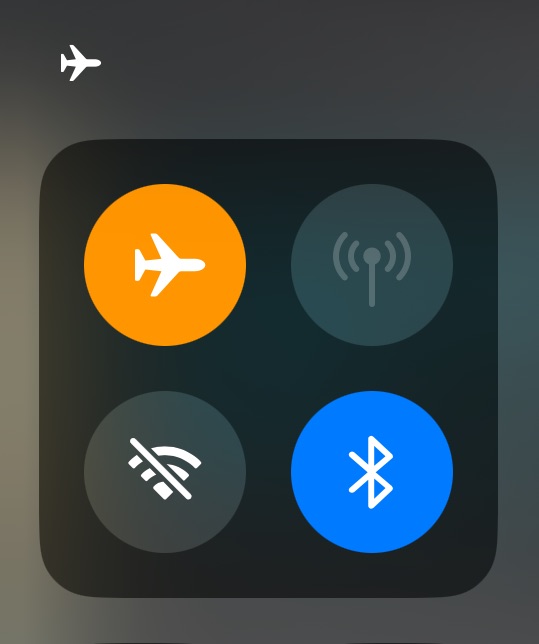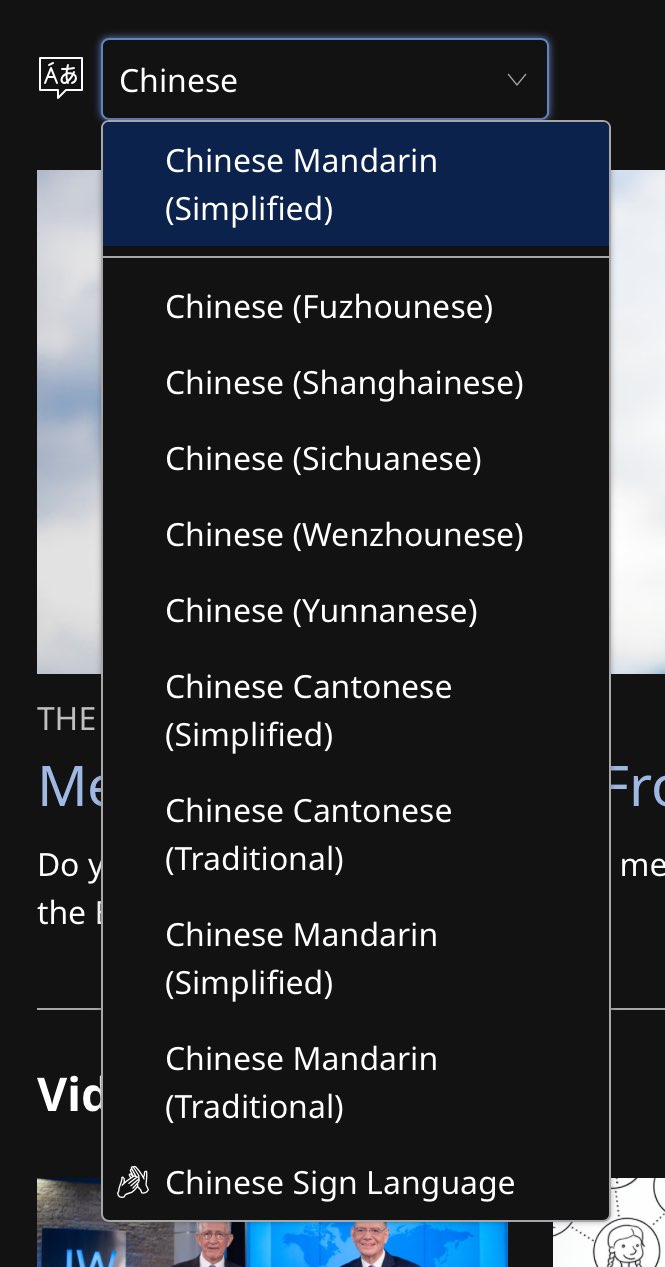Fēixíng Móshì ((Fēi·xíng Flying · Travelling → [Flying] 飞行 飛行) (Mó·shì Model · Mode → [Mode] 模式) → [Airplane Mode (on mobile devices)]) ← Tap/click to show/hide the “flashcard”
[Notes: Tap/click on a Pīnyīn (Pīn·yīn {Piecing Together of} · Sounds → [Pinyin] 拼音) expression to reveal its “flashcard”; tap/click on a “flashcard” or its Pīnyīn (Pīn·yīn {Piecing Together of} · Sounds → [Pinyin] 拼音) expression to hide the “flashcard”. 📖 📄 📘 icons mean 📖 Reveal All, 📄 Reveal Advanced, and 📘 Reveal None re all the “flashcards” in the heading, paragraph, etc. that they are placed at the beginning of.]
One of the publications that is now recommended to be used on Bible studies is the Yǒngyuǎn Xiǎngshòu Měihǎo de Shēngmìng—Hùdòng Shì Shèngjīng Kèchéng ((Yǒng·yuǎn Eternally · {Far (in Time)} 永远 永遠) (Xiǎng·shòu Enjoy · Receive 享受) (Měi·hǎo Beautiful · Good 美好) (de ’s 的) (Shēngmìng Life 生命)—(Hù·dòng {Each Other} · Moving → [Interactive] 互动 互動) (Shì (Type 式) (Shèng·jīng Holy · Scriptures → [Bible] 圣经 聖經) (Kè·chéng Lessons · Procedure → [Course] 课程 課程) → [Enjoy Life Forever!—An Interactive Bible Course (lff)]) (Enjoy Life Forever! (lff)) book. An outstanding feature of this book is its extensive use of the post-paper technology of video, which enables information to be presented much more vividly than could be done with paper. Also, at this time, one of the unique features of Pīnyīn (Pīn·yīn {Piecing Together of} · Sounds → [Pinyin] 拼音) Plus material is Pīnyīn (Pīn·yīn {Piecing Together of} · Sounds → [Pinyin] 拼音) Plus video transcripts. These can help us Mandarin field language learners to analyze and understand the Mandarin speech used in the many videos referenced in the Mandarin Enjoy Life Forever! book. This in turn can help us make more effective use of these videos while participating in Mandarin Bible discussions using this book.
Airplane Mode—the Video
This week’s MEotW, “Fēixíng Móshì ((Fēi·xíng Flying · Travelling → [Flying] 飞行 飛行) (Mó·shì Model · Mode → [Mode] 模式) → [Airplane Mode (on mobile devices)])”, occurs in subtitle 51 of the transcript for the video for lesson 11, point 4 of the Mandarin Enjoy Life Forever! book:
English:
For me personally, then, it’s really helpful when I put my phone in airplane mode so that I can really focus on what I’m reading and nothing can distract me.
Mandarin:
50
00:02:02,401 → 00:02:04,319
📖 📄 📘 suǒyǐ (suǒ·yǐ {that which} · {is the reason} → [so] 所以) wǒ (I 我) yándú (yán·dú {grind → [study]} · read 研读 研讀) de (’s 的) shíhou ({(particular) times} 时候 時候)51
00:02:04,319 → 00:02:06,947
📖 📄 📘 huì (will 会 會) xiān (first 先) bǎ (hold 把) shǒujī (shǒu·jī hand · machine → [mobile/cellular/portable phone] 手机 手機) tiáodào (tiáo·dào {to be adjusted} · {to arrive at → [to]} 调到 調到) Fēixíng Móshì ((Fēi·xíng Flying · Travelling → [Flying] 飞行 飛行) (Mó·shì Model · Mode → [Mode] 模式) → [Airplane Mode (on mobile devices)]).52
00:02:06,947 → 00:02:08,949
📖 📄 📘 Zhèyàng (Zhè·yàng this · {form → [way]} 这样 這樣) jiù ({(I) then} 就) kěyǐ (kě·yǐ can · [suf] 可以) bǎochí (bǎo·chí protect · hold → [keep] 保持) zhuānzhù ({being focused} 专注 專注),53
00:02:08,949 → 00:02:11,035
📖 📄 📘 bú (not 不) shòu ({being subjected to} 受) dǎrǎo (dǎ·rǎo {striking of → [causing of]} · disturbing 打扰 打擾) de (-ly 地) yándú (yán·dú {grind → [study]} · read 研读 研讀) Shèngjīng (Shèng·jīng (the) Holy · Scriptures → [the Bible] 圣经 聖經) le ([(at the end of a phrase/sentence) indicates a change] 了).
As Apples Support’s web page explains, “You can use Airplane Mode to turn off the wireless features on your device while you’re flying in an airplane.”

The Airplane Mode button in Control Center (iPhone, iOS 17.4.1)
“Fēixíng Móshì ((Fēi·xíng Flying · Travelling → [Flying] 飞行 飛行) (Mó·shì Model · Mode → [Mode] 模式) → [Airplane Mode (on mobile devices)])” is indeed the official Mandarin translation of “Airplane Mode” that Apple uses on its China website (USA page, China page). And yes, Android also has an “airplane mode/Airplane mode”. (Its official documentation uses both capitalization styles.) Additionally, “Fēixíng Móshì ((Fēi·xíng Flying · Travelling → [Flying] 飞行 飛行) (Mó·shì Model · Mode → [Mode] 模式) → [Airplane Mode (on mobile devices)])” is also the official Mandarin translation of “airplane mode/Airplane mode” in the Simplified Chinese version of Google’s official documentation.
“Airplane Mode” Components
In “Fēixíng Móshì ((Fēi·xíng Flying · Travelling → [Flying] 飞行 飛行) (Mó·shì Model · Mode → [Mode] 模式) → [Airplane Mode (on mobile devices)])”, “fēi (fly | hover; flutter | {flying → [swiftly]} 飞 飛)” means “flying”. “Fēi (fly | hover; flutter | {flying → [swiftly]} 飞 飛)” also appears in “fēijī (fēi·jī flying · machine → [aircraft; airplane] 飞机 飛機)”, which means “airplane”, but which, interestingly, is not used in the Mandarin expression corresponding to “Airplane Mode”. Instead, the expression that is used comes from combining “fēi (fly | hover; flutter | {flying → [swiftly]} 飞 飛)” with “xíng (go; walk; travel [→ [do; perform; carry out; engage in; exercise | be current; prevail; circulate | behaviour; conduct; deeds | [is] alright; [is] acceptable | [is] capable; [is] competent | [is] temporary; [is] makeshift | soon]] 行)”, which in this context means “travelling”. The result is “fēixíng (fēi·xíng flying · going; walking; travelling → [flying | flight] 飞行 飛行)”, which effectively means “flying” or “flight”. So, the Mandarin expression for “Airplane Mode” on a more literal level actually means “Flying Mode”, or “Flight Mode”.
That brings us to “móshì (mó·shì model; pattern; standard · type; style; pattern; form; mode → [model; pattern; schema; mode] 模式)”, which in “Fēixíng Móshì ((Fēi·xíng Flying · Travelling → [Flying] 飞行 飛行) (Mó·shì Model · Mode → [Mode] 模式) → [Airplane Mode (on mobile devices)])” is used to effectively mean “mode”. The first morpheme in this expression, “mó (pattern; standard; model; example | imitate 模)”, can mean “model”. (In fact, “nánmó (nán·mó male · model 男模)” means “male model”.) The other morpheme, “shì (type; style; pattern; form; formula; mode 式)”, can mean “style” or “mode”.
Airplane Mode Culture
A number of bands have been named after Airplane Mode, including this one that’s steeped in Apple culture in other ways as well, such as most of its members having been involved in Apple ecosystem app development, and this one from Australia that uses the Australian spelling “Aeroplane Mode”. (Interestingly, Apple Support’s Australia page for Airplane Mode uses the spelling “Aeroplane Mode”, while its UK page and Canada page use the American spelling “Airplane Mode”.)
Yes, Airplane Mode, along with mobile devices in general, are now so much a part of modern everyday life and culture that the organization mentioned them in a video about Bible reading. (This occurrence of “Fēixíng Móshì ((Fēi·xíng Flying · Travelling → [Flying] 飞行 飛行) (Mó·shì Model · Mode → [Mode] 模式) → [Airplane Mode (on mobile devices)])” in the Enjoy Life Forever! book material is not the first one in the organization’s published material either—the RTE entry for this expression refers to an occurrence of it in “tv.jw.org 2018-04 46:33-35”.) So, it would be good for us Mandarin field language learners to know how to talk in Mandarin about Airplane Mode and other things related to mobile devices too, even those of us who can still remember when the (emotionally vehement!) view of many was that only Bibles printed on paper were real Bibles!
For convenience:
The direct link for the Pīnyīn (Pīn·yīn {Piecing Together of} · Sounds → [Pinyin] 拼音) Plus resource for the Enjoy Life Forever! book is:
The short link for Chinese field language-learning links for the Enjoy Life Forever! book is:
More Pīnyīn (Pīn·yīn {Piecing Together of} · Sounds → [Pinyin] 拼音) and Pīnyīn (Pīn·yīn {Piecing Together of} · Sounds → [Pinyin] 拼音) Plus web material based on the Mandarin Enjoy Life Forever! book will be made available in the Pīnyīn (Pīn·yīn {Piecing Together of} · Sounds → [Pinyin] 拼音) Plus web resource as time allows.
